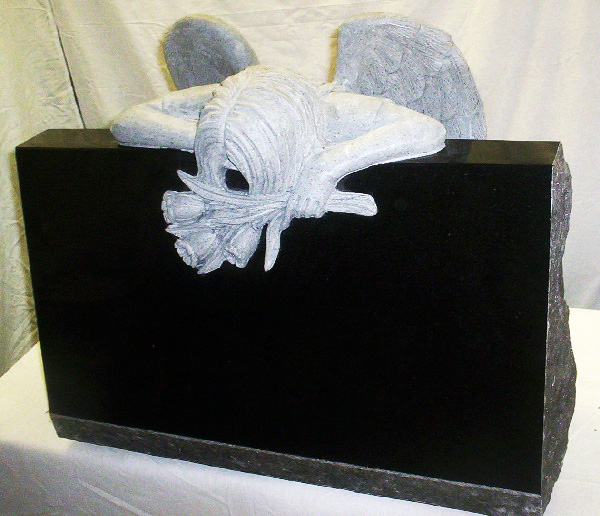The Latin words memento mori—“remember death” or “remember that you must die”—were used in ancient Rome and in medieval times to remind the people of the imminence of death and the uncertainty as to its hour or circumstances. It was also believed to have been used in Rome during parades for Roman generals celebrating victories or triumphs in battle. Walking behind the victorious general would be his slave, who was given the task of reminding the general that, although he was celebrating his victory, at any moment he could be brought down by defeat. The slave would shout the words, “Memento mori!” Minding the Bedside: Nursing from the Heart of the Awakened Mind, pg. 137.
Meditating On Death, A Supreme Meditation
Our lives are filled with uncertainty and yet many of us live life as if our death will never come. Because we have no idea how, where or when we’ll die, we tip-toe around its inevitability and pretend that we’ll die a Hollywood or Bollywood ending. Why?!
To Meditate with death in mind is one of the “most supreme” methods of meditating because compared to all of the many things that clutter our mind, death can bring us closer to our hopes and fears. Take a minute and think about it; while meditating do we think, “Hmm, did I leave the oven on?”, “I wonder if I’ll get that raise,” “That guy/girl was cute, why didn’t I get his/her number?” “”What if I lose my job?” How about, “What if I lose my life?!“
Death is inevitable and yet we tend to avoid it. Why then not meditate on what we avoid the most? Good fuel for the fire of meditation?
Of all footsteps, that of the elephant is supreme; of all mindfulness meditations, that on death is supreme. – Quote by the historical Buddha.
Were you to meditate on death, how would you do it? What circumstances bring you the greatest peace in contemplating your death? What circumstances bring you the greatest discomfort?
There’s No Guarantee of a Hollywood Death
I remember when I was working with HIV patients in 1993 sitting in a workshop and having the facilitator ask us those very questions. I also vividly remember how many of us squirmed in our chairs when the question, “What is your scariest way that you can imagine your death?” came up. Not very comfortable.
There’s no guarantee that we’ll die the movie-ending. When I’m watching a movie or video and I see the “Hollywood death”, my stomach turns over because I realize how much this kind of scene can lull us into a state of denial or fairy-tale thinking. Granted, having seen thousands of people die during my nursing career, I have seen wonderful deaths where everything worked out “perfectly.” Unfortunately, I’ve also see at least an equal numbers of deaths where this was not the case.
Reflect for a moment on how you deal with unwanted circumstances that occur in your daily life. What are the bodily sensations that you experience? How clear, or not, does your mind feel? How distracted do you get? How do you deal with extreme emotions? This is why we meditate on death, because it’s such a loaded subject and has so much power.
If you’ve practiced meditating on the uncertainty of the hour and time of your death then just imagine how settled your mind could be during something as trivial as a traffic-ticket or a lost wallet. Imagine how free your mind can be if you’ve captured some aspect or glimpse of your mind that is unruffled by the thoughts and emotions that arise within it.
The time spent contemplating and studying impermanence prepares us to accept that the body dies. It’s just a natural consequence of being alive. While you are alive, it is important to learn how to live in such a way that you can be at ease with whatever happens. When dying, it’s important to learn how to die in a way that is not so burdened by anxiety, fear or pain—to learn how to die without dread.[i]– Chokyi Nyima Rinpoche, from Medicine and Compassion—A Tibetan Lama’s Guidance for Caregivers
“GREAT” you say, “How the hell do I meditate on dying?” Good question. It’s not so much about meditating on dying as it is about learning to let go of everything, your thoughts, your feelings about death, your imaginings, and then just rest in that space. But give yourself that Hollywood ending.
How to Meditate On Death
Imagine yourself with others at your bedside. Be merciful and allow yourself to have a painless death, surrounded by those who love you. And then, practice letting go of your surroundings and your loved ones. Try this in short sessions. I find that I can do it best when lying in bed, going to sleep. After all, sleep is a bit like death, saying goodbye to today’s life with the uncertainty about what tomorrow will bring.
To actually “meditate” this way, use whatever method of meditation you’re most comfortable with. (For resources on how to mediate, see below). Enter into that meditative mind and then begin to use the reflection on your own death as the object of your meditation. When you’re trying this exercise, if you find yourself feeling uneasy, bored or distracted, congratulations, it’s working! Most of us don’t want to go near this subject. This may not be the easiest thing to do, but if you’re doing it, that means that you’re slowly chipping away at the belief that it “ain’t gonna happen to you.”
A little personal sharing here; recently I had the opportunity to have to wait two-weeks for a biopsy result to determine whether I had a very aggressive form of cancer. During that time period, this kind of meditation came in very handy. During the first week, I found myself walking in the aisles at the local Target store and I practiced “disappearing” myself. That is, I visualized the aisle that I was walking in without me being there. Life just went on around me. I could see what it would have been like without me being there to witness it all.
The following morning, I slept in a bit and when I awoke, I listened to the sound of my wife and son talking together. Again, I disappeared myself, imagining them talking without me being in their life anymore. It gave me a real appreciation of the present moment, the preciousness of those who I love, and the impermanence of my life and existence here. Actually, it really vitalized my mediation, it made it quite vibrant! Try it, see how it works for you.
When you practice this way, when you use meditation as a method for working with dying:
- Do you find yourself more at ease with the subject of death before or after trying this?
- Are there times when it’s better to work with this kind of exercise?
- Are you able to meditate on the “non-Hollywood” death?
Please share your comments here…others are reading and want to know what you think.
Next week, in Part 2, we’ll explore how to work with bodily sensations as a way to contemplate how we’d work with death if it wasn’t so peaceful. Additionally, I’ll be discussing a way to get to the heart of meditation…fast!
Learn To Meditate and it Will Free Your Mind
If reading this post stirs up a lot and you need resources for meditation or to work with this kind of material, please see the Related Posts below. Also please check out other posts on this site. As well, please also feel free to contact me if you need clarification on anything that I’ve written or suggested. I’m also happy to discuss this one-on-one with you if there are specific questions or if you need clarification on anything that I’ve presented.
[space height=”6″]
[divider scroll_text=””]
[space height=”6″]
This site has tons of tools for learning how to meditate and be compassionate.
I encourage you to look through the HUNDREDS of articles that I’ve written and especially check out my weekly meditation tips and other useful meditation materials provided for your health and well being. Please let me know if you’d like to discuss anything with me, have any questions or need clarification regarding anything that I’ve written about.
Other Great Meditation Resources and Information:
For More Information on How to Meditate
Please view the Related Stuff below for help getting started in your meditation practice! Also don’t forget to download my free e-book, Can Meditation Change the Way that You View Your World? and download the free e-book, How to Work with the Four Distractions to Meditation and get started learning how to deal with some of the major obstacles in meditation.
As always, please feel free to share your comments on meditation and contact me if you’d like to see additional content or other discussions on this site.
[button color=”#fff” background=”#FF6600″ size=”medium” src=”http://www.mindingthebedside.com/contact-us/”]Contact Me[/button]
[i] Rinpoche, Chokyi Nyima, Shlim, David R. Medicine and Compassion—A Tibetan Lama’s Guidance for Caregivers. Boston: Wisdom Publications, 2004, pg. 145.




[…] opportunity that this tragic event offers you to explore the deeper nature of your mind.And in the last post, we reflected on death and its inevitability. We also began a meditation using a scenario of our […]
[…] about it, you’ve only got so much time in your life, right? And for all you know, something (like death!) might be waiting around the next corner to take your time away. So…what are you waiting […]
[…] the previous posts, How to Meditate, How to Die, Part 1, and How to Meditate, How to Die, Part 2 – Even Famous Rappers-Buddhists Die, (please see […]
[…] or otherwise difficult one. Meditation is a great way to still your mind so that when you’re working with others who are dying, you’re able to be present and to know that you’ve been your best during this important […]